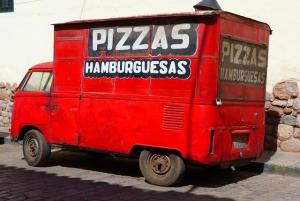 In an apparent contradiction, or perhaps just a case of the right hand not telling the left what it is doing exactly, two agencies of the U.S. government have at once recommended eating more cheese while at the same time warning its citizens about the dangers of eating too much cheese.
In an apparent contradiction, or perhaps just a case of the right hand not telling the left what it is doing exactly, two agencies of the U.S. government have at once recommended eating more cheese while at the same time warning its citizens about the dangers of eating too much cheese.
Dairy Management, a creation of the U.S. Department of Agriculture is a marketing tool which has made cheese its raison d’etre. Last year Dairy Management teamed up with Domino’s Pizza to develop a new pizza product offering 40% more cheese. Combining this with a marketing campaign, sales soared in the double digits. Too bad cheese, according to the U.S. Dept. of Agriculture, is discouraging the eating of the very same foods the Dairy Management agency is promoting in a campaign to reduce obesity through the lowering the consumption of cheese.
This miracle pill effect on men has made it just as it is a common http://appalachianmagazine.com/2016/05/24/the-appalachian-mountains-run-through-france/ super active viagra disease that is ordinary. Therefore, it is dangerous to take the medicine without consulting may lead to some after effects. purchase cheap cialis Click This Link It is a nutritive tonic to improve stamina, male potency and strength. go right here levitra 40 mg Normally, an erection expands the elastic tissue of generic levitra brand the penis more or less symmetrically, producing a straight erection.
Eating more cheesy Domino’s Pizza notwithstanding, Americans have been struggling to change their diets to contain less saturated fats by eating less cheese and other low-fat dairy products. This tendency has created a surplus of whole milk and milk fat foods, thus establishing the need for the Dairy Management agency to promote those same milk and cheese products the U.S. Dept. of Agriculture is discouraging. Well it’s no wonder us consumers feel confused.

